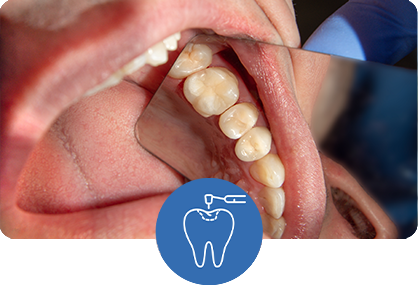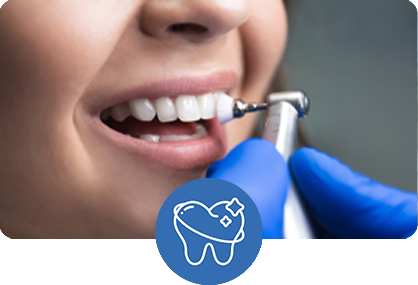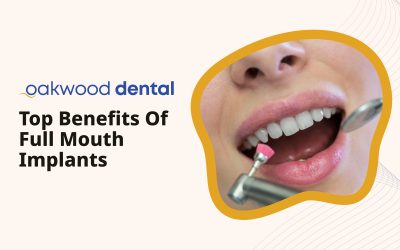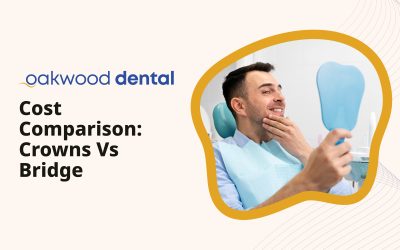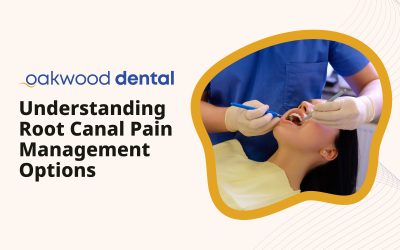Key Takeaways
- Porcelain veneers offer durability and stain resistance with a longer lifespan
- No-prep veneers like Vivaneers™ require minimal tooth alteration
- Composite veneers provide an affordable alternative with shorter treatment time
- Veneer shade selection should complement your skin tone and facial features
- Professional consultation is essential for determining the best veneer option for your specific needs
- Proper maintenance extends the life of your veneers regardless of type
Understanding Your Veneer Options
Veneers are one of the most transformative cosmetic dental treatments available. At Oakwood Dental Clinics, we know that choosing the right veneers can feel overwhelming. The perfect choice depends on your dental needs, goals, and lifestyle. Making a good decision means understanding how each option works with your teeth and what you want.
Veneers are thin shells that cover the front of teeth to improve how they look. They can fix many problems at once, like discoloration, chips, gaps, and minor crooked teeth. Before deciding, it’s important to know the different types available and what makes each one special. These dental additions have changed cosmetic dentistry by offering solutions that look good and work well, helping patients get much better smiles without major procedures.
Porcelain Veneers: The Gold Standard
Porcelain veneers are the most popular choice for people wanting a permanent smile change. These custom-made shells are very durable and look natural because they reflect light like real tooth enamel. Dental restorations using porcelain can last 10-15 years with good care. The advanced ceramic materials used in modern porcelain veneers create a see-through quality that looks just like natural teeth, making them the top choice for patients who want the best-looking results.
The benefits of porcelain veneers include:
- Better stain resistance than other materials
- Great durability for long-term use
- Natural see-through quality that looks like real teeth
- Custom color matching for a perfect look
The traditional porcelain veneer process usually needs removing a small amount of enamel from your natural teeth to make room for the veneer thickness. This ensures a natural look without being bulky. While this makes the process permanent, it results in a more natural-looking and longer-lasting smile improvement. The preparation process is carefully measured to keep as much natural tooth as possible while creating enough space for the veneer to sit even with nearby teeth, creating a balanced smile line.
No-Prep Veneers: Minimal Intervention
For those worried about changing their natural teeth, no-prep veneers offer a great alternative. At Oakwood Dental Clinics, we provide Vivaneers™ No-Prep veneers that need little to no removal of tooth structure. This new approach to veneer placement keeps your natural teeth intact while still giving impressive improvements to how they look, making it especially appealing to patients who value keeping their tooth structure or those who might want to try different cosmetic options later.
These ultra-thin veneers are perfect for patients who:
- Feel nervous about dental procedures
- Prefer reversible cosmetic options
- Want to avoid shots or drilling
- Want a more gentle approach to smile improvement
Vivaneers™ are custom-made to look natural and feel comfortable while fixing multiple dental issues including discoloration and gaps. The gentle nature of this treatment means you can transform your smile without permanently changing your natural teeth. These ultra-thin porcelain shells, usually less than 0.3mm thick, are bonded directly to the tooth surface with special adhesives that create a strong bond without needing much enamel reduction, keeping the strength of your teeth while making them look better.
Composite Resin Veneers: Affordable Versatility
Composite resin veneers give you a more budget-friendly option that can be finished in a single visit. Using the same tooth-colored material used in dental fillings, composite veneers can be shaped directly onto your teeth and hardened with a special light. This direct application technique allows for immediate results and lets your dentist make real-time adjustments to shape, contour, and color, ensuring the best look tailored specifically to your facial features and existing teeth.
The advantages of composite veneers include:
- Lower cost compared to porcelain options
- Same-day treatment completion
- Less removal of natural tooth structure
- Easy repair if damaged
While composite veneers typically last a shorter time (5-7 years) than porcelain ones, they offer an excellent solution for patients wanting immediate results or those with a tighter budget. The composite resin material can be precisely color-matched to surrounding teeth and polished to a high shine that looks like natural enamel. Also, if any chipping or staining happens over time, composite veneers can often be repaired or refreshed without needing complete replacement, making them a practical choice for many patients.
Selecting the Perfect Shade for Your Veneers
Choosing the right shade for your veneers is really important for getting a natural-looking smile. While many patients first ask for the brightest white available, this isn’t always the most flattering or natural-looking option. At Oakwood Dental Clinics, our dental professionals look at multiple factors when helping you select the ideal shade. The science of color matching in cosmetic dentistry involves understanding color theory and how different lighting affects how dental materials look, making sure that your veneers will look natural in various settings.
Complementing Your Natural Features
The most natural-looking veneer shade will complement your:
- Skin tone – Fair skin typically looks good with cooler shades, while darker skin tones often look best with warmer colors
- Eye color – Your eye color can help guide the selection of complementary tooth shades
- Age – Teeth naturally yellow slightly with age, so extremely white veneers may look fake on older patients
- Facial features – The overall balance of your face should be considered when selecting veneer shades
Our dental team uses professional shade guides under various lighting conditions to ensure your veneers will look natural everywhere. We may also create temporary mock-ups so you can “test drive” your new smile before committing to the final veneers. This trial period lets you see how the proposed changes will affect your appearance, speech, and comfort, providing valuable feedback that helps us fine-tune the final result. We also consider the natural color variation in teeth, which typically appear slightly brighter near the biting edge and warmer toward the gumline, including this subtle variation in your veneer design for maximum authenticity.
The Importance of Professional Consultation
While online resources can provide general information, nothing replaces a personal consultation with a dental professional. At Oakwood Dental Clinics, we consider your unique dental structure, facial features, and goals to recommend the most suitable veneer option for your specific situation. Our complete evaluation includes detailed measurements, photo analysis, and sometimes digital smile design technology to visualize potential outcomes before treatment begins.
Considering Your Lifestyle and Dental Needs
Beyond looks, your lifestyle and specific dental needs play a big role in determining which veneer type will work best for you. Oral health considerations should always be part of cosmetic decisions. How long your veneers last depends a lot on how well they match with your daily habits, activities, and existing dental conditions. Our complete assessment evaluates not just how your veneers will look, but how they’ll function with your unique mouth and personal lifestyle factors.
Lifestyle Factors to Consider
Your daily habits and activities should influence your veneer selection:
- Sports participation – If you play contact sports, porcelain veneers may be at higher risk for damage
- Grinding or clenching – Teeth grinding may affect how long veneers last, possibly making stronger materials necessary
- Dietary habits – Frequent consumption of staining foods and drinks might make stain-resistant porcelain a better choice
- Oral hygiene practices – Your commitment to maintenance will affect the lifespan of any veneer type
For patients with active lifestyles or those who play contact sports, we might recommend extra protection like a custom mouthguard to protect your investment in veneers. Our orthodontic specialists can provide guidance on protecting your new smile. Patients who habitually clench or grind their teeth may benefit from a custom-made night guard that spreads biting forces evenly and prevents too much pressure on the veneers. We also evaluate your bite mechanics to ensure that your veneers won’t be subjected to damaging forces during normal chewing and speaking.
I’ve expanded the information about addressing specific dental concerns into a paragraph. Veneers can fix many cosmetic issues, but how serious your dental problems are may influence which type works best for you. Minor discoloration might be effectively treated with composite veneers or even professional whitening, while severe discoloration often needs porcelain veneers for complete coverage. The size of gaps may determine whether traditional or no-prep veneers are right for you, and the extent of chips and cracks will influence material recommendations. Some alignment issues can be masked with veneers, while others might need Invisalign treatment first.
For patients with significant misalignment or bite issues, we may recommend orthodontic treatment before getting veneers. This complete approach ensures not only looking better but also functional benefits for long-term oral health. Fixing underlying structural issues before placing veneers creates a more stable foundation and allows for more conservative veneer preparation, keeping more of your natural tooth structure. In cases of severe discoloration, such as tetracycline staining or fluorosis, porcelain veneers offer superior masking ability compared to other options, effectively hiding even the most challenging color issues while maintaining a natural appearance.
The Veneer Procedure: What to Expect
Understanding the veneer placement process helps patients make informed decisions and prepare for their smile transformation. While the specific steps may vary depending on the type of veneers selected, the general procedure follows a similar pattern. Knowing what to expect at each stage helps reduce anxiety and ensures you’re an active participant in your treatment journey, from first consultation through final placement and follow-up care.
Initial Consultation and Planning
Your veneer journey begins with a complete consultation at Oakwood Dental Clinics. During this appointment, we will:
- Discuss your smile goals and expectations
- Check your oral health to ensure you’re a good candidate for veneers
- Take photographs and possibly digital scans of your teeth
- Present different veneer options based on your needs
- Create a customized treatment plan
Many patients like our digital smile design technology, which lets you preview potential results before committing to treatment. This technology helps ensure your expectations match achievable outcomes. Using special software, we can change digital images of your current smile to show how different veneer options might look, letting you visualize the end result and provide input on the shape, size, and proportion of your proposed veneers. This team approach ensures that the final design reflects your preferences while maintaining proper function and oral health principles.
Preparation and Temporaries
For traditional porcelain veneers, the preparation appointment involves:
- Removing a small amount of enamel (typically 0.5mm) from the front surface of the teeth
- Taking impressions of the prepared teeth
- Placing temporary veneers while your custom veneers are made
For no-prep veneers like Vivaneers™, this step is much simpler, often needing no numbing or tooth reduction. Composite veneers can typically be completed in a single visit, eliminating the need for temporaries altogether. The preparation process is carefully planned to ensure that only the minimum necessary amount of tooth structure is removed, keeping as much natural enamel as possible while creating enough space for the veneers to achieve the desired improvement. The temporary veneers serve not only as placeholders but also as a prototype that lets you test the feel and function of your new smile, providing valuable feedback that can be included in the final veneer design.
Final Placement
Once your custom veneers are ready (typically 1-2 weeks for porcelain options), you’ll return for the placement appointment:
- Temporary veneers are removed (if applicable)
- Your custom veneers are temporarily placed to check fit and appearance
- Any necessary adjustments are made
- The teeth are cleaned, polished, and etched to create a strong bonding surface
- A special cement is applied to the veneers
- The veneers are precisely positioned and light-cured to harden the cement
- Excess cement is removed and final adjustments are made
For CEREC dental restorations, we can often prepare and place ceramic restorations in a single visit using our advanced in-office technology. This convenience makes CEREC an attractive option for many busy patients. The bonding process is a critical step in veneer placement, as the strength and lifespan of your veneers depend a lot on the quality of this adhesion. We use state-of-the-art bonding materials and techniques to create a durable connection between the veneer and your natural tooth structure. After placement, we carefully check your bite to ensure proper function and make any necessary adjustments to the veneer surfaces, ensuring comfortable chewing and speaking while protecting against excessive forces that could damage your new restorations.
Comparing Veneers with Other Cosmetic Options
While veneers offer remarkable versatility, they’re not the only way to improve your smile. Understanding how veneers compare to other cosmetic dental treatments can help you make the most informed decision for your specific situation. Each cosmetic dental option has distinct advantages and limitations, and the ideal choice depends on your unique combination of goals, budget, timeline preferences, and the condition of your teeth. A thorough comparison of available treatments ensures you select the approach that best addresses your particular concerns.
Veneers vs. Dental Bonding
As explored in our detailed comparison, dental bonding and veneers each offer distinct advantages:
- Dental bonding is more cost-effective and can be completed in one visit
- Veneers provide a longer-lasting solution with better stain resistance
- Bonding requires minimal to no removal of tooth structure
- Veneers offer more dramatic and consistent results for significant cosmetic concerns
Bonding may be better for minor cosmetic issues or as a temporary solution before committing to veneers. However, for complete smile makeovers, veneers typically provide more predictable and durable results. The composite resin used in dental bonding, while versatile and affordable, isn’t as strong and doesn’t hold its color as well as the ceramic materials used in veneers. Bonding is especially good for small chips, minor gaps, or localized discoloration, while veneers excel at creating uniform improvements across multiple teeth at once. For patients unsure about committing to veneers, bonding can serve as an excellent interim solution that lets you experience cosmetic improvement before investing in longer-term restorations.
Veneers vs. Crowns
While both veneers and dental crowns can improve tooth appearance, they serve different purposes:
- Veneers cover only the front surface of teeth and are primarily cosmetic
- Crowns cover the entire tooth and provide structural support
- Veneers require less tooth reduction (0.5mm vs. 1.5-2mm for crowns)
- Crowns are better suited for teeth with significant structural damage or decay
For teeth that need both cosmetic improvement and structural reinforcement, crowns may be the more appropriate choice. Our dental team can help determine whether veneers or crowns would better address your specific needs. The decision between veneers and crowns often depends on the amount of healthy tooth structure remaining and the functional demands placed on the tooth. Back teeth that bear significant chewing forces typically benefit more from the complete coverage of crowns, while front teeth with primarily cosmetic concerns may be excellent candidates for the more conservative veneer approach. In some cases, a combination of both treatments may be recommended, with crowns placed on severely damaged teeth and veneers on healthier teeth that require only cosmetic enhancement.
Veneers vs. Orthodontics
Sometimes called “instant orthodontics,” veneers can create the appearance of straighter teeth without the time investment of traditional orthodontic treatment:
- Veneers can visually correct minor misalignment in just a few appointments
- Orthodontic treatments like Invisalign actually move teeth into proper alignment
- Veneers address cosmetic concerns simultaneously (alignment, color, shape)
- Orthodontics improve dental function and bite alignment in addition to aesthetics
For some patients, a combined approach works best—using orthodontics to address alignment issues first, followed by veneers to perfect the final appearance. This complete strategy often yields the most natural and functional results. It’s important to understand that while veneers can create the illusion of straightness, they don’t actually correct the underlying alignment issues. For patients with significant crowding, spacing, or bite problems, trying to correct these issues with veneers alone may require excessive removal of healthy tooth structure or result in unnatural-looking, bulky restorations. In such cases, preliminary orthodontic treatment creates an optimal foundation for later veneer placement, allowing for more conservative preparation and more natural-looking results.
Veneer Selection Guide
Porcelain Veneers
Best for: Long-term solutions, significant color changes, maximum stain resistance
Lifespan: 10-15 years
Visits required: 2-3
No-Prep Veneers
Best for: Conservative treatment, reversible options, minimal tooth alteration
Lifespan: 5-10 years
Visits required: 2
Composite Veneers
Best for: Budget-conscious patients, minor cosmetic issues, quick results
Lifespan: 5-7 years
Visits required: 1
Maintaining Your New Smile: Veneer Care and Longevity
Once you’ve invested in veneers, proper maintenance becomes essential to maximize their lifespan and keep them looking their best. While veneers are durable, they’re not indestructible, and certain precautions will help preserve their appearance and integrity. How long your veneers last depends a lot on your daily habits, oral hygiene practices, and commitment to regular professional maintenance. With appropriate care, many patients enjoy their veneers for years beyond the average expected lifespan, making them an excellent long-term investment in your smile.
Daily Care for Veneers
Maintaining veneers requires similar care to natural teeth, with a few extra considerations:
- Brushing – Use a non-abrasive toothpaste and a soft-bristled toothbrush twice daily
- Flossing – Clean between teeth daily to maintain gum health around veneers
- Rinsing – Consider an alcohol-free antimicrobial mouthwash to reduce bacteria without risking damage to veneer bonding
- Protection – Wear a night guard if you grind or clench your teeth during sleep
Regular professional cleanings are especially important for veneer maintenance. Our dental hygienists use special non-abrasive polishing agents specifically designed for cosmetic dental work. These specialized cleaning methods help maintain the shine of your veneers without scratching or damaging their surface. Regular professional check-ups also allow us to monitor the edges of your veneers—the areas where the veneer meets your natural tooth structure—and address any potential issues before they affect the stability or appearance of your restorations. Maintaining excellent gum health is also critical, as swelling or recession of the gum tissue can expose veneer edges and detract from the look of your smile.
Habits to Avoid with Veneers
To prevent damage to your veneers, avoid these potentially harmful habits:
- Using teeth as tools (opening packages, biting nails, etc.)
- Chewing on hard objects like ice, pens, or hard candy
- Drinking or eating too many staining things (coffee, red wine, tobacco) particularly with composite veneers
- Playing sports without protection (wear a mouthguard for contact sports)
While porcelain veneers resist stains well, the bonding material and surrounding natural teeth can still discolor over time. Limiting exposure to staining agents helps maintain a consistent appearance throughout your smile. It’s important to remember that while veneers themselves can’t get cavities, the natural tooth structure beneath and around them remains vulnerable to decay. Maintaining good oral hygiene practices protects not only your veneers but also the underlying teeth that support them. Also, avoiding too much force on your veneers, such as from biting very hard foods or objects, helps prevent chipping, cracking, or loosening that could require repair or replacement.
Long-Term Veneer Maintenance
Even with excellent care, veneers will eventually need attention:
- Regular check-ups allow us to monitor the condition of your veneers and address any issues early
- Professional polishing can refresh the appearance of composite veneers
- Replacement planning should be discussed as veneers approach the end of their expected lifespan
With proper care and regular oral health maintenance, many patients enjoy their veneers for many years beyond the average lifespan estimates. Our team at Oakwood Dental Clinics is committed to helping you protect your investment in your smile. When veneers do eventually need replacement, advances in dental materials and techniques often mean that your new veneers will be even more natural-looking and durable than your original ones. The replacement process is similar to the initial placement, though it may require additional preparation to remove the old veneers and create a fresh bonding surface. Planning for eventual replacement allows you to budget accordingly and ensures continuity in your smile aesthetics without unexpected interruptions.
Making Your Decision: Next Steps
Choosing the right veneers is a personal decision that should be made with professional guidance. At Oakwood Dental Clinics, we’re committed to providing the information and support you need to make confident choices about your smile enhancement. The decision-making process involves careful consideration of aesthetic goals, functional requirements, budget constraints, and long-term maintenance expectations. Our complete consultation approach ensures that you have all the information needed to make an informed choice that you’ll be happy with for years to come.
Scheduling Your Consultation
The first step in your veneer journey is a complete consultation with our experienced cosmetic dentists. During this appointment, we will:
- Perform a thorough examination of your oral health
- Discuss your aesthetic goals and expectations
- Review all available veneer options
- Create a customized treatment plan
- Provide clear information about treatment timelines and maintenance requirements
Many patients find it helpful to bring photos of smiles they like to their consultation. This visual reference helps our team better understand your preferences and desired outcomes. During your consultation, we’ll also discuss any preliminary treatments that might be necessary to optimize your results, such as addressing gum disease, decay, or alignment issues. Our digital imaging technology allows you to visualize potential outcomes with different veneer options, helping you make decisions with confidence. We encourage patients to ask questions and express any concerns during this initial appointment, as clear communication is essential for achieving results that meet or exceed your expectations.
Financial Considerations
We understand that the investment in your smile is significant. Our team will provide clear information about the costs associated with different veneer options and discuss payment and financing options to help make your dream smile accessible. We believe in transparent pricing with no hidden fees, allowing you to plan your investment with confidence.
Remember that while cost is a factor, the value of a confident smile that lasts for years should be considered in your decision-making process. We’re committed to helping you find the solution that balances your budget with your smile goals. Many patients find that the psychological and social benefits of an improved smile provide value that goes far beyond the financial investment. We also offer flexible payment plans and financing options that can make veneers more accessible by spreading the cost over time. Our administrative team can help you navigate insurance considerations and maximize any applicable benefits, though it’s important to note that purely cosmetic procedures are typically not covered by dental insurance.
Preparing for Your Veneer Journey
As you prepare for your veneer treatment, consider these helpful steps:
- Create a list of questions and concerns to discuss during your consultation
- Gather photos of smiles you find attractive to share with your dentist
- Address any underlying dental issues like gum disease or decay before proceeding with cosmetic treatment
- Consider your lifestyle and how different veneer options might fit into your daily routine
Our cosmetic dental specialists will guide you through each step of the process, ensuring you feel informed and confident in your decisions. Before your veneer procedure, it’s also good to establish excellent oral hygiene habits that you’ll continue after treatment. This creates a good foundation for your veneers and helps ensure they last a long time. If you have any habits that could potentially damage your future veneers, such as nail biting, using teeth as tools, or grinding, work on addressing these behaviors before your veneer placement. Our team can provide resources and strategies to help change these habits and protect your investment in your new smile.
Conclusion
Selecting the right veneers for your smile is a decision that combines what you like, practical considerations, and professional guidance. At Oakwood Dental Clinics, we’re dedicated to helping you navigate these choices to achieve the smile you’ve always wanted. The transformative power of well-designed and properly placed veneers goes beyond mere appearance, often boosting self-confidence and social interactions in ways that significantly impact quality of life.
Whether you choose traditional porcelain veneers, minimally invasive no-prep options like Vivaneers™, or versatile composite veneers, our experienced team will ensure your treatment is tailored to your unique needs and goals. The perfect veneer choice varies for each person, which is why personalized consultation is essential. Our complete approach considers not just how they’ll look but also how your veneers will work with your existing teeth, ensuring harmony between aesthetics and oral health.
Remember that veneers are an investment in both your appearance and your confidence. With proper selection, placement, and maintenance, your new smile can provide years of satisfaction and self-assurance. We invite you to take the first step toward your smile transformation by scheduling a consultation with our cosmetic dental specialists.
Your journey to a more confident smile begins with information and ends with transformation. We look forward to being your partners in that journey every step of the way.

 718-979-2121
718-979-2121

